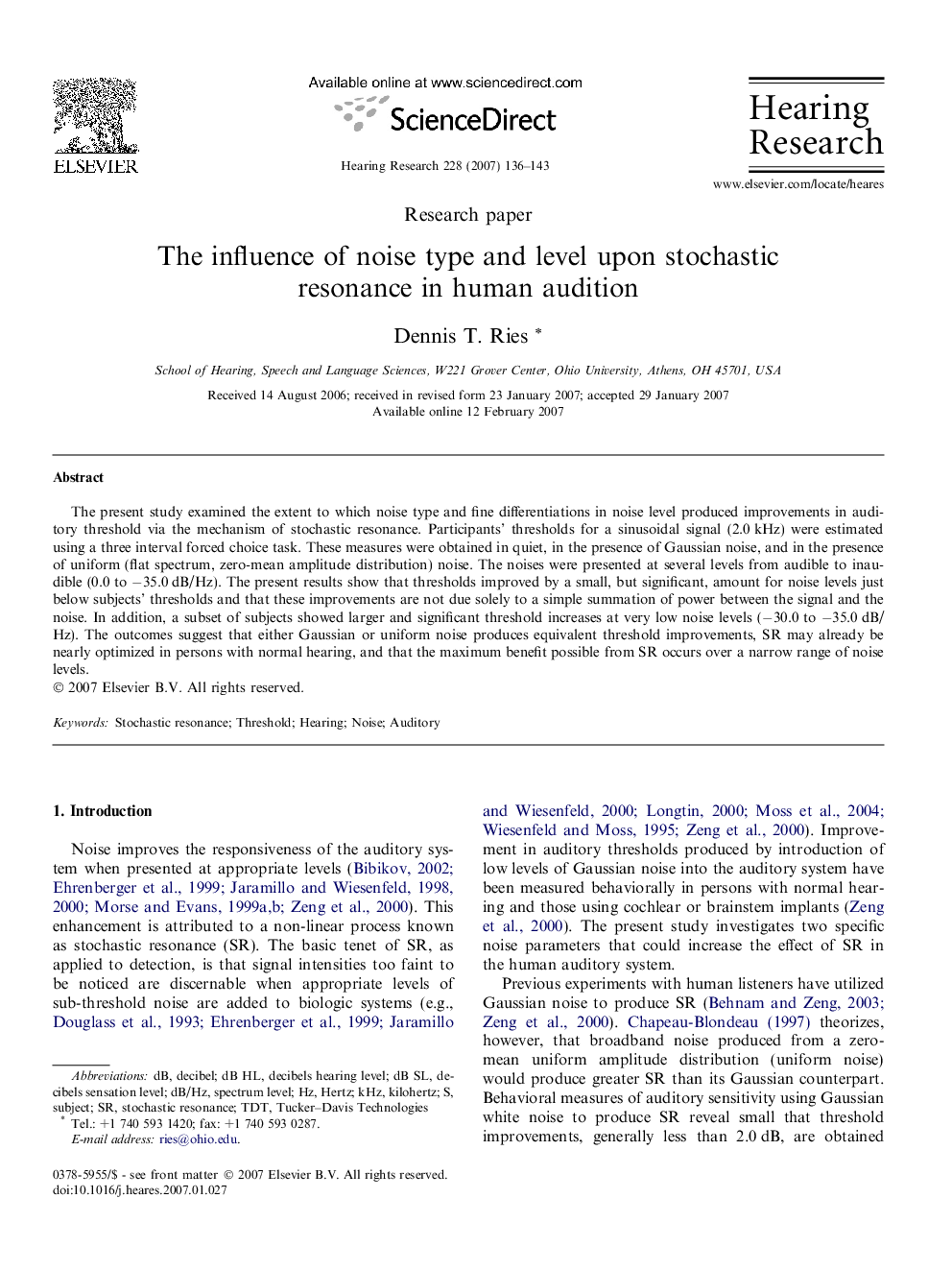| Article ID | Journal | Published Year | Pages | File Type |
|---|---|---|---|---|
| 4356229 | Hearing Research | 2007 | 8 Pages |
Abstract
The present study examined the extent to which noise type and fine differentiations in noise level produced improvements in auditory threshold via the mechanism of stochastic resonance. Participants' thresholds for a sinusoidal signal (2.0Â kHz) were estimated using a three interval forced choice task. These measures were obtained in quiet, in the presence of Gaussian noise, and in the presence of uniform (flat spectrum, zero-mean amplitude distribution) noise. The noises were presented at several levels from audible to inaudible (0.0 to â35.0Â dB/Hz). The present results show that thresholds improved by a small, but significant, amount for noise levels just below subjects' thresholds and that these improvements are not due solely to a simple summation of power between the signal and the noise. In addition, a subset of subjects showed larger and significant threshold increases at very low noise levels (â30.0 to â35.0Â dB/Hz). The outcomes suggest that either Gaussian or uniform noise produces equivalent threshold improvements, SR may already be nearly optimized in persons with normal hearing, and that the maximum benefit possible from SR occurs over a narrow range of noise levels.
Related Topics
Life Sciences
Neuroscience
Sensory Systems
Authors
Dennis T. Ries,
